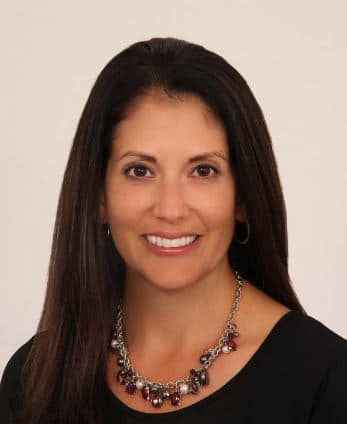By Tish Ramirez, AuD
The rapid advancement of technology has introduced a new era in how we interact with the world around us. You can control the thermostat in your home while at work. Wearable fitness trackers make it easy to see how many steps you take each day. You can even find out the weather by asking a tabletop device. This heightened state of connectivity is known as the Internet of Things (IoT), and it holds a great deal of promise for those with hearing loss.
Because of hearing challenges, you may have felt left out or isolated in the past, but the IoT now enables you to connect with the larger world in entirely new ways. Just consider how today’s hearing aids are no longer limited to simply amplifying sound. They have become advanced smart devices themselves, able to connect with other gadgets to positively transform how you go about your everyday life.
Greater flexibility and discretion
Throughout the course of the day, you may need to adjust the volume or change the settings of your hearing aids. Traditionally, this required you to adjust the hearing aids manually to get them to the proper setting or through the use of a separate remote control. With the latest in connected technology, such adjustments can be done directly from your own smartphone while eliminating the need for another device.
The benefits of this capability are numerous. For one, it provides you with a discreet way to manage your hearing. Rather than excusing yourself from a situation or waiting for an appropriate time to adjust your hearing aids, you can make the needed adjustments whenever and wherever it is most convenient. In addition to improved flexibility and privacy, connecting hearing aids to smartphones enables you to adjust the settings for every situation throughout the day, empowering you to take hearing health into your own hands.
Enhanced listening in all situations
Today’s hearing aids allow you to not only hear better, but also enjoy a truly optimal listening experience, no matter what you want to hear. This includes even the most common daily activities, like listening to music, watching TV, and talking on the phone. For example, with made for iPhone and other direct-connect hearing aids, when connected to a smartphone, ringtones and alerts stream directly to both ears, ensuring you can hear notifications even if your phone isn’t close by. This functionality also works during voice calls, enabling you to hear the other person through your hearing aids and making sure you don’t miss out on important conversations.
Pairing hearing aids with a smartphone provides a better way to listen to music as well by streaming your favorite songs directly into both of your hearing aids. Instead of straining to hear music or having to crank up the volume from another device, you can listen whenever and wherever you want at a comfortable decibel level for a truly personalized, enjoyable experience. New hearing aid technology also enables you to stream audio from the TV directly into both ears. You can adjust the volume from the smartphone app, rather than on the TV, for yet another fully customizable approach to everyday activities.
Hearing care anytime and anywhere
The IoT has revolutionized how you connect to your hearing care professional (HCP) with the introduction of telehealth services. Through this technology, you can interact with your HCP via messaging or video chat from your smartphone. This is particularly useful for people who live in remote areas, lack transportation, or otherwise have difficulty getting to their HCP’s office.
Beyond convenience, such technology has a positive impact on adoption and use of hearing aids – especially if you’re a first-time wearer. The initial days and weeks with new hearing aids are critical. Any dissatisfaction or discomfort can lead to abandonment of the devices. However, when you can let your HCP know that something isn’t right as soon as possible, the HCP can provide immediate service and even adjust the hearing aids remotely. With real-time, remote fine-tuning, HCPs can ensure you are satisfied from the beginning, setting you up for continued success with your hearing aids.
Enhanced hearing in a more connected world
The IoT has changed the way people interact with their devices, and hearing aids are no exception. When connected to the other technologies we use each day, they become powerful tools to deliver more convenience and a better hearing experience. In the age of the IoT, where everything is linked together like never before, new advancements in hearing care technology empower people with hearing loss to be just as connected.
 Dr. Tish Ramirez is the Sr. Manager of Education and Training for Signia. She is responsible for the content, planning, and delivery of sessions to train the company’s network of hearing care professionals and staff on product and audiology-related topics. Tish holds a doctorate degree in Audiology from A.T. Still University, a graduate degree from Arizona State University, and an undergraduate degree from the University of Arizona. Tish has been a featured speaker at several industry events and is the author of articles appearing in numerous audiology publications.
Dr. Tish Ramirez is the Sr. Manager of Education and Training for Signia. She is responsible for the content, planning, and delivery of sessions to train the company’s network of hearing care professionals and staff on product and audiology-related topics. Tish holds a doctorate degree in Audiology from A.T. Still University, a graduate degree from Arizona State University, and an undergraduate degree from the University of Arizona. Tish has been a featured speaker at several industry events and is the author of articles appearing in numerous audiology publications.
*featured image courtesy pixabay







This is an excellent article discussing the exponential benefits for those with hearing loss as the partnership between telehealth and audiology grows. The market is changing and with these advances, the consumer gets to truly be the winner. So exciting! There is a company called Easy Hearing Care that has launched to provide this very service and they have a survey on the website to provide the consumer a place to tell them what they want in hearing care. Any feedback helps for the hearing care revolution.